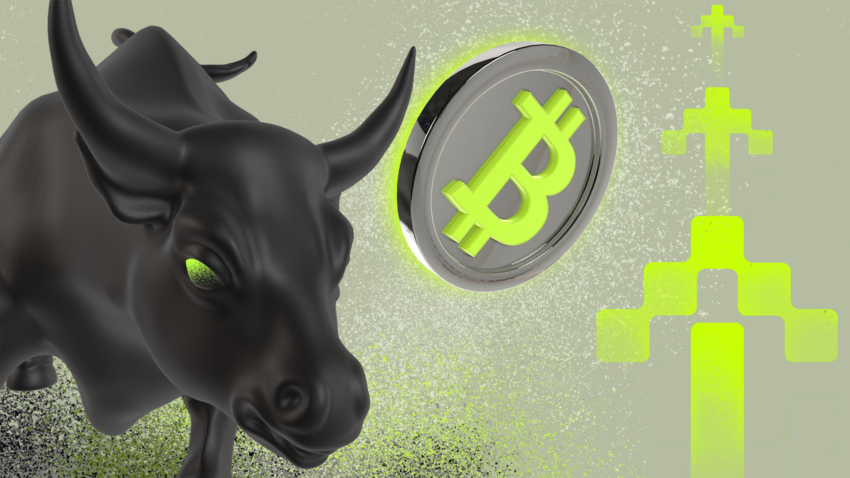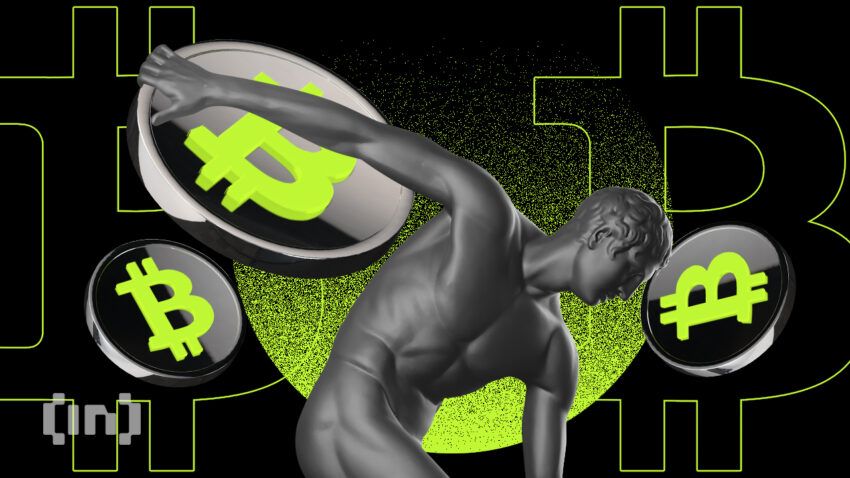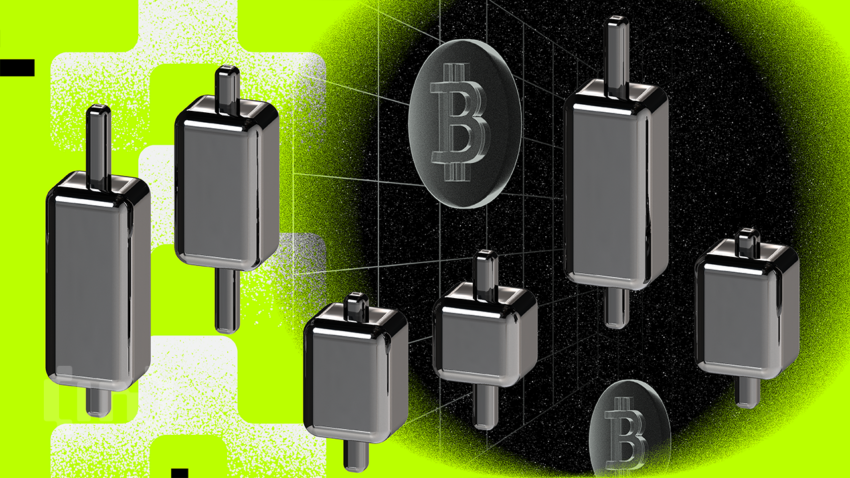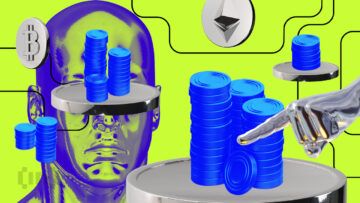Bitcoin, the original cryptocurrency, is the most well-known and arguably best-loved of all crypto assets. In many minds, it has become synonymous with blockchain technology’s transformative and disruptive potential. But exactly what is Bitcoin? This guide outlines what you need to know about the peerless virtual currency, its history, and how it works.
What is bitcoin?

A digital currency born in the dawn of the internet age. A decentralized form of wealth free from government shackles. A coin without a physical gauge. Peer-to-peer exchange of value. It’s easy to be poetic about bitcoin, or at least we believe so. But let’s cut to it.
Ultimately, bitcoin is an open-source cryptocurrency designed to eliminate the need for middleman involvement in financial transactions. Usually, traditional currencies such as USD and EUR are managed and controlled by central authorities such as banks or governments. Instead, bitcoin is built on a decentralized network — the blockchain — and was intended to facilitate user-to-peer transactions.
Origin of bitcoin
Bitcoin was conceptualized in 2009 by an anonymous developer or team of developers using the name Satoshi Nakamoto.
Before the launch of bitcoin, traditional currencies suffered (and continue to suffer) from several limitations. These include but are not limited to inflation and strict cross-border payment regulations. Typically, as governments often print more money to pay debts, inflation increases. Also, traditional fiat currencies make it difficult (and/or expensive) for people to move money across borders. So intermediaries, like banks, must process transactions, which adds cost and time to the process.
Satoshi Nakamoto aimed to solve these issues by designing a currency that would operate on a peer-to-peer network, enabling fast, borderless transactions without the need for intermediaries. To achieve this, Satoshi combined several existing technologies in a novel way. Cryptography provides security, and the blockchain is a public ledger of all transactions.
How does bitcoin work?

One of the key features of Bitcoin is its limited supply. While traditional currencies can be printed ad infinitum, the supply of Bitcoin (BTC) is capped at 21 million. This ensures scarcity, making bitcoin more akin to a precious metal than a traditional currency. This limited supply, combined with its decentralized nature, makes Bitcoin a unique and valuable asset.
The transactions on the Bitcoin network are recorded on the blockchain, providing transparency and security. Each block in the blockchain contains a record of the latest transactions. Once a block is added to the chain, the information it contains is permanent and cannot be altered. This makes it virtually impossible for any one person to manipulate the system.
Since its creation, BTC has captured the imaginations of people around the world and inspired the creation of countless other cryptocurrencies, termed altcoins. While it remains a volatile and relatively untested asset, the unique combination of scarcity, decentralized nature, and ability to securely track transactions make BTC a revolutionary form of currency. Note that at the time of writing, BTC is trading around $23.4k after declining from an all-time high of $68k in late 2021.
Bitcoin security
Bitcoin is made secure through a combination of cryptographic algorithms and a decentralized network. Some key factors that contribute to the security of bitcoin include the following:
Proof-of-work
This is a consensus model that validates BTC transactions. The process of storing and verifying transactions on the blockchain, known as mining, requires significant computational power. This makes it more daunting for a single malicious actor to control the network and compromise its security.
Cryptographic algorithms
Bitcoin uses advanced cryptographic algorithms to secure transactions and prevent double-spending. This includes the SHA-256 hash function and Elliptic Curve Digital Signature Algorithm (ECDSA).
Decentralized network
As explained above, BTC runs on a decentralized network, meaning any person or entity does not control it. This makes it more difficult to manipulate and reduces the risk of a single point of failure.
Public ledger
All BTC transactions are stored and verified on a public ledger, known as the blockchain. This makes it possible for anyone to verify the accuracy of the transactions and ensures the same coin cannot be spent twice.
What are bitcoins used for?

Whether you are an everyday trader, hodler, shopper, or charitable giver, Bitcoin offers unique and exciting utilities. Here’s you you can use your BTC coins.
Store of value
With its limited supply of 21 million and its decentralized nature, Bitcoin is seen by many as a hedge against inflation and storage for their wealth.
Unlike traditional currencies, which can be printed ad infinitum, the supply of BTC is capped, making it more like a precious metal like gold than a traditional currency. And while originally intended as a peer-to-peer currency, bitcoin’s primary use is as a store of value. Scalability issues (derived from the proof-of-work mechanism) mean that Satoshi’s original vision for the currency hasn’t quite been realized.
Online purchases
Since bitcoin is decentralized, it facilitates borderless transactions without the need for intermediaries. This has made it possible for people to use BTC to purchase goods online, especially in countries where traditional currencies are subject to strict government controls.
Investment
Similar to how people invest in stocks and other asset classes, Bitcoin can be used as a means of investment. With its scarcity, fixed and limited supply, many people see it as a good investment opportunity. While the value of BTC can be volatile, its limited supply makes it an attractive option for people looking to diversify their investments.
Cross-borders payment
Bitcoin operates on a peer-to-peer network and is not subject to the whims of any central authority, making it suitable to move money across different national lines without intermediaries. Despite this, many other cryptos (altcoins), including the native cryptos of many Bitcoin forks such as Bitcoin Cash (BCH), are more suited to being used for cross-border payments. This is due to the latter’s quicker processing speeds and lower transaction fees (as per bitcoin’s scalability issue mentioned earlier).
Fundraising and charitable donations
One of the most prevalent issues with charitable donations is transparency. With the decentralized nature of bitcoin, users are able to donate to charities and other causes directly with ithout the need for intermediaries. This essentially improves trust and transparency and can potentially transform how charitable donations are made.
How can you mine bitcoin?

Bitcoin mining is the process of validating transactions on the Bitcoin network and adding new blocks to the blockchain, the public ledger of all BTC transactions. Miners — individuals or organizations — use powerful computers and specialized mining software to solve complex mathematical problems.
The miner who first solves the problem is rewarded with newly created bitcoins. Mining BTC is a complex and competitive process that requires specialized equipment and a significant investment in time and resources. If you are interested in mining BTC, it is important to do your research and understand the costs involved. In addition to the specialized mining equipment, you will also need to pay for electricity and other costs associated with running your mining operation.
Here are a few ways you can mine BTC.
Solving complex mathematical problems
The mining typically involves breaking down and solving complex mathematical problems to add new blocks to the chain. An increase in computing power makes it easier to solve these problems and earn rewards in the form of newly created coins. You will need a powerful computer and specialized mining software to mine BTC in this way.
Join a mining pool
A mining pool is a team of miners who combine their computing power in order to increase their chances of earning rewards. The rewards are then shared among the members of the pool based on their contributions to the pool’s overall computing power.
Cloud mining
Cloud mining is another option for would-be miners. Unlike joining a mining pool or traditional mining, cloud mining doesn’t require specialist technology. Here, miners rent computational power from a cloud mining service provider. By utilizing remote data centers that share processing power among renters, cloud miners don’t have to manage any complicated hardware.
However, the cloud mining industry is known for scams and can still require an upfront investment. So, it is essential to choose a trusted cloud mining site.
How to buy and sell bitcoin

Bitcoin is the largest and the most popular cryptocurrency, so it’s available to buy and sell on a huge variety of centralized and decentralized crypto exchanges. To buy BTC, you must set up a wallet, then find a platform or exchange to purchase the coins.
Once you have set up an account with an exchange, you need to verify your identity (if you are using a CEX requiring KYC) and link your bank account or credit card to buy BTC. The process varies depending on the exchange. Typically, it involves placing an order and paying the specified amount in fiat currency, such as GBP pounds or USD dollars, in exchange for BTC.
Likewise, selling bitcoin is simple. To do so, you will need to place an order and specify the amount of bitcoin you wish to sell and the price you are willing to sell it for. Once your order is executed, you will receive the payment in your linked bank account or credit card.
Bitcoin’s advantages and disadvantages

While there are many advantages to using and investing in BTC, there are also several disadvantages to consider.
Advantages of bitcoin
- Security
Bitcoin uses advanced cryptographic algorithms to secure transactions and protect against fraud and hacking. This makes it a safe and secure option for storing and transferring value.
- Decentralization
Bitcoin is not managed or controlled by any central authority or government. This provides users with greater freedom and privacy when using bitcoin and makes it more resistant to state manipulation.
Disadvantages of bitcoin
The price of BTC can be highly volatile and can fluctuate rapidly, making it a risky investment option for those looking to hold onto their coins for the long term.
- Lack of regulation
While the decentralization of bitcoin is often seen as an advantage, the lack of regulation can also make the entire ecosystem more susceptible to fraudulent activities and scams.
- Lack of mass adoption
Despite its growing popularity, BTC is still not widely accepted as a form of payment by merchants and businesses. As such, it is impractical for everyday use and functions most clearly as a store of value/investment.
What is the future of BTC?
Since bitcoin was introduced in 2009, this open-source cryptocurrency has come a long way. By combining cryptography, a proof-of-work mechanism, and a limited supply, Satoshi created a valuable asset and kickstarted a digital currency revolution. As the world adopts web3 technologies, bitcoin might play a significant role as a decentralized asset that represents freedom, security, and efficiency.
Clearly, the original crypto and its network have limitations, specifically around scalability. The future of BTC as a store of value seems relatively secure. But, the future of bitcoin as a peer-to-peer payment system might just be realized by the cryptos that bitcoin has inspired. Whether this will materialize via the native coins of bitcoin forks — or other innovative altcoins — remains to be seen.
Frequently asked questions
When did Bitcoins start?
What is BTC?
How to get bitcoins?
Disclaimer
In line with the Trust Project guidelines, the educational content on this website is offered in good faith and for general information purposes only. BeInCrypto prioritizes providing high-quality information, taking the time to research and create informative content for readers. While partners may reward the company with commissions for placements in articles, these commissions do not influence the unbiased, honest, and helpful content creation process. Any action taken by the reader based on this information is strictly at their own risk. Please note that our Terms and Conditions, Privacy Policy, and Disclaimers have been updated.




